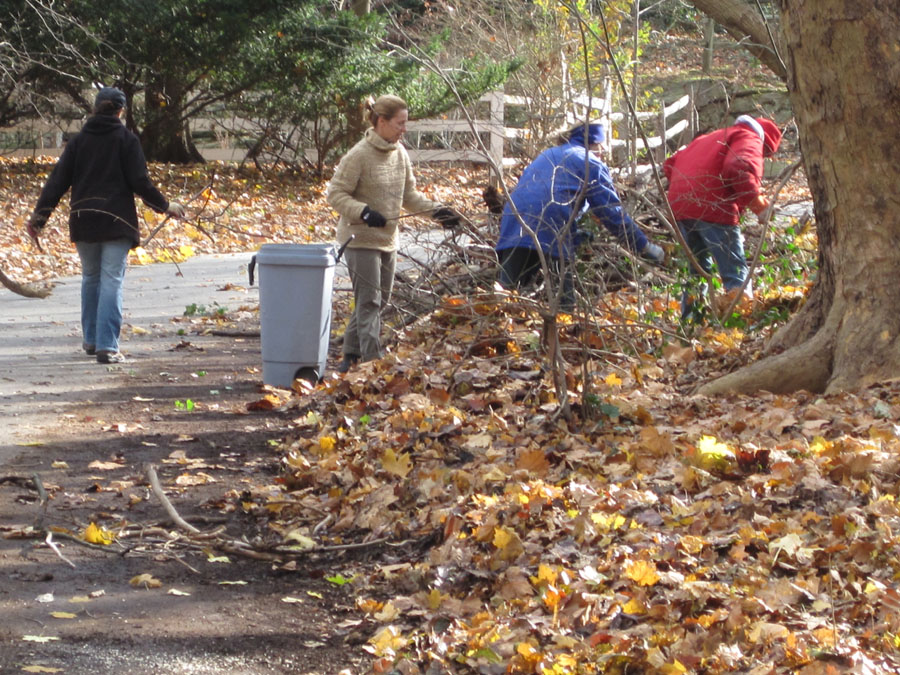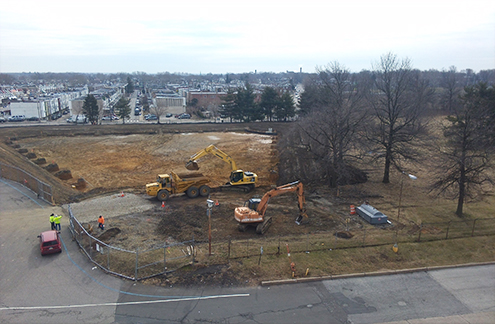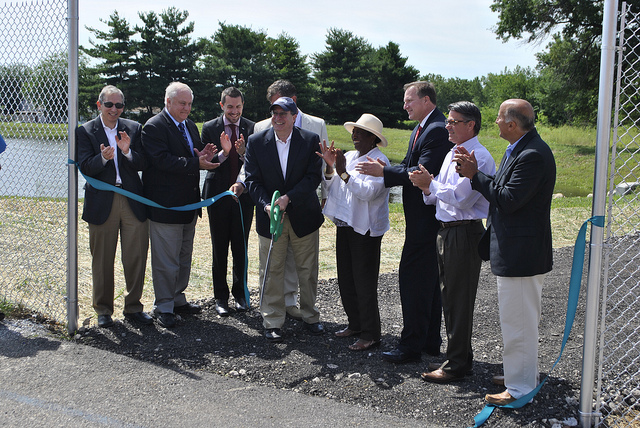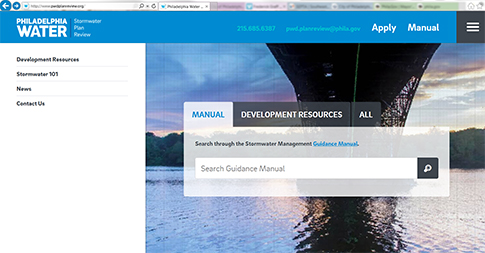
PWD recently participated in the 7th annual Pennsylvania Stormwater Management Symposium held October 17-18th at Villanova University. The goal of the symposium is to advance understanding of sustainable stormwater management in all aspects of planning, design, implementation and regulatory compliance. This year’s symposium had over 50 technical podium and poster presentations and tours of green infrastructure projects in the Delaware Valley.
PWD’s Office of Watersheds presented two technical presentations. Rachel Ahern and Shelly Jones (Green Stormwater Infrastructure Planning & Design) presented “Stormwater Management: A Framework for Site Design.” Stephen White (Green Stormwater Infrastructure Maintenance) presented “When it Rains it Stores: PWD’s SCM Monitoring.” The conference abstracts and video presentations are available via the Villanova website.
Sandy Sorlien, an educator from the Fairmount Water Works led a tour, “Reinventing the Neighborhood and Urban LIDs” Beginning at the Big Green Block, a site rich in green stormwater infrastructure, the group explored stormwater tree trenches, rain gardens, a porous pavement parking lot, underground detention infiltration facilities, green roofs and rainwater cisterns. Afterwards they visited Liberty Lands Park, an industrial brownfield, transformed into a vital community green space. This site featured a rain garden, community gardens and 180 trees of varying species. Ending their tour in Columbus Square, particpants viewed Philadelphia’s first stormwater planter.
The second tour offered by PWD, “What’s Happening in the Wissahickon Watershed,” was led led by Erik Haniman and Ken Hinde. The tour started at Saylor Grove, a one acre stormwater wetland designed to treat an estimated 70 million gallons of urban stormwater per year. Their next stop was the 5,400 feet long stream restoration project at Bells Mill, including improved riparian habitat and energy dissipating stone to protect the stream from stormwater runoff discharged by nearby stormwater outfalls. The tour ended with a final stop to the stormwater treatment wetland, Wises Mill. This two acre area of Fairmount Park treats a portion of the stormwater from a 90-acre watershed prior to discharging to the headwaters of Wises Mill’s lower branch. This effort aims to restore and stabilize areas of Wises Mill Run that have been significantly undermined by previous gray stormwater infrastructure and dams on this stream.





